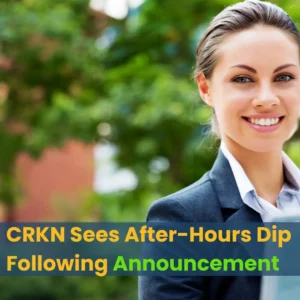After-hours stock market provides traders and investors with extended opportunities to engage with their favorite equities.
While the regular market hours offer a bustling atmosphere of activity, the Nasdaq after hours period presents a unique arena for those who seek to harness the potential of Nasdaq stocks.
In this article, we will delve into the nuances of after-hours trading, explore its advantages and challenges, and provide strategies and tips to navigate the Nasdaq after-hours stock market successfully.
Getting to Know After-Hours Trading
Prior to learning about Nasdaq after hours trading, it is important to understand what trading beyond regular market hours entails.

After-hours trading refers to securities transactions that take place outside of routine trading hours, which normally run from 9:30 a.m. to 4:00 p.m.
Eastern Time.
The Nasdaq after hours trading session extends from 4:00 p.m. to 8:00 p.m. Eastern Time.
Investors are able to react to market-moving news, earnings reports, and other events outside of regular trading hours through this additional trading window.
Advantages and Disadvantages
Engaging in Nasdaq after hours offers both distinct advantages and notable challenges.
One of the primary benefits is the opportunity to react to news that breaks after the markets have closed for the day.
This includes corporate announcements, economic data releases, and geopolitical events.
Being able to respond promptly to such events can provide a competitive edge in capitalizing on sudden price movements.

However, Nasdaq after hours trading is not without its downsides. Increased volatility is a hallmark of this trading period.
The potential for a significant price swing is greater when market participants are fewer and trading volumes are lower.
It can also become more expensive to execute trades if bid-ask spreads widen – the difference between buying and selling prices.
Liquidity is another critical consideration. The after-hours stock market tends to have lower liquidity compared to regular trading hours.
Consequently, it is difficult to buy or sell shares at desired prices. It’s essential to exercise caution and use limit orders to manage the risk of executing trades at unfavorable after-hours stock prices.
Key Considerations Before Trading
Before embarking on Nasdaq after hours trading, there are several key considerations to keep in mind.
-
Thorough Research
When it comes to trading, knowledge is power. It is vitally important to conduct thorough research on the companies you are interested in before executing any trades.
Stay educated about recent news, earnings reports, and any other factors that could impact after-hours stock prices.

-
Trading Plan and Risk Management
The importance of defining your trading plan cannot be overstated. Outline your trading goals, preferred strategies, and risk tolerance.
By using risk management techniques, such as stop-loss orders, you can minimize your losses.
-
Choose a Reliable Platform or Broker
Selecting a reliable after-hours trading platform or broker is crucial.
Ensure that the platform offers access to Nasdaq stocks during extended trading hours and provides real-time data and execution capabilities.
Effective Strategies for After-Hours Trading on Nasdaq
-
News-Based Trading
The after-hours period is especially sensitive to breaking news. Keeping a watchful eye on news outlets and social media can alert you to market-moving events.
Taking advantage of short-term price movements can be achieved by reacting quickly to the news.
-
Earnings Report Trading
Earnings reports can significantly impact after-hours stock prices, and after-hours trading allows you to react to these reports before the next trading day.
Analyze the results, forecasts, and management commentary to gauge the market’s sentiment toward the company’s performance.

-
Technical Analysis
Technical analysis tools can be just as effective during after-hours trading.
Identification of entry and exit points can be accomplished using chart patterns, moving averages, and support/resistance levels.
These indicators can provide insights into trends and price patterns.
-
Pre-Market Analysis
Analyzing pre-market activity can offer insights into potential trends for the after-hours session.
Pre-market movements can influence how stocks behave once the after-hours market opens, providing valuable information for your trading decisions.
Risk Management and Precautions
Navigating the Nasdaq after hours market requires a keen focus on risk management.
-
Set Stop-Loss Orders
Protect your investments by setting stop-loss orders.
In the event that a stock’s price moves against your predetermined price level, a sale will automatically be triggered, limiting any potential losses.
-
Avoid Overleveraging
Overleveraging can magnify losses in a volatile environment.
Only trade with capital you can afford to lose, and avoid risking more than a reasonable percentage of your account on a single trade.
-
Beware of Illiquid Stocks
Liquidity challenges can be more pronounced during after-hours trading.
Avoid trading stocks with low trading volumes, as they may have wider bid-ask spreads and could be more challenging to exit.
-
Realistic Expectations and Patience
Approach after-hours trading with realistic expectations.
Not every trade will result in a significant profit. Put your trading plan first and avoid chasing quick gains.
Conclusion
Nasdaq after-hours trading offers traders and investors a variety of exciting opportunities.
By understanding the nuances of after-hours trading, acknowledging its benefits and risks, and implementing effective strategies, you can navigate this unique market environment with confidence.
Remember that experience is a valuable teacher; consider practicing with virtual accounts or small positions before committing substantial capital to Nasdaq after-hours trading.
By conducting sufficient research, preparing, and disciplining yourself, you can take advantage of Nasdaq stocks outside of regular trading hours.
Frequently Asked Questions (FAQs)
What Time Does NASDAQ Close GMT?
NASDAQ closing time in GMT varies, but it typically closes around 8:00 PM GMT during extended hours trading.
When After-Market Orders Get Executed?
After-market orders are executed during after-hours trading, which usually occurs from 4:00 PM to 8:00 PM Eastern Time.
How After Market Trading Works?
After market trading allows investors to buy and sell stocks after regular trading hours, typically from 4:00 PM to 8:00 PM EST, offering more flexibility in trading.
What Is After-Hours Trading on Nasdaq?
As the name implies, after-hours trading on Nasdaq refers to the purchase and sale of stocks after the regular trading hours of 9:30 a.m. to 4:00 p.m. Eastern Time.
It provides an extended window for investors to trade based on news and events that occur after the market closes.
Is It Beneficial to Trade Nasdaq Stocks After Business Hours?
After-hours trading allows you to react to breaking news, earnings releases, and economic data before the markets open the next day. This can provide opportunities to capitalize on sudden price movements.
Nasdaq After-Hours Trading Challenges: What Are They?
After-hours trading comes with increased volatility, lower liquidity, and wider bid-ask spreads. Due to these factors, prices can swing more widely and trade execution is more challenging.
How Does After-Hours Trading Differ from Regular Trading Hours?
After-hours trading extends beyond the regular market hours and provides a unique opportunity to trade when the markets are officially closed. After the closing bell, investors have the opportunity to react to news and events.
What Are Some Key Considerations Before Engaging In Nasdaq After Hours Trading?
Thorough research on companies, a well-defined trading plan, and a reliable trading platform are essential. Taking steps to reduce risk, such as setting up stop-loss orders, is crucial to protecting your investments.
Which Nasdaq After-Hours Trading Strategies Are Most Effective?
Strategies include news-based trading, reacting to earnings reports, utilizing technical analysis tools like chart patterns, and analyzing pre-market activity for insights into potential trends.
What Are My Options for Managing Risk When Trading Nasdaq Stocks After Hours?
Be careful of illiquid stocks, put stop-loss orders in place to limit possible losses, and avoid overleveraging. Having a solid risk management plan is essential to navigate the increased volatility.
Should Technical Analysis Be Used During After-Hours Trading?
Yes, technical analysis tools like chart patterns, moving averages, and support/resistance levels can be effective in identifying trends and potential entry/exit points during after-hours trading.
Is After-Hours Trading Suitable for Beginners?
Due to the high volatility and low liquidity of after-hours trading, there is a higher risk involved. Beginners should first gain experience during regular trading hours and understand the nuances before venturing into after-hours trading.
What’s The Key Takeaway for Nasdaq After-Hours Trading?
Nasdaq after-hours trading presents both opportunities and risks. Proper research, disciplined trading strategies, and realistic expectations are essential for success in this unique market environment.













